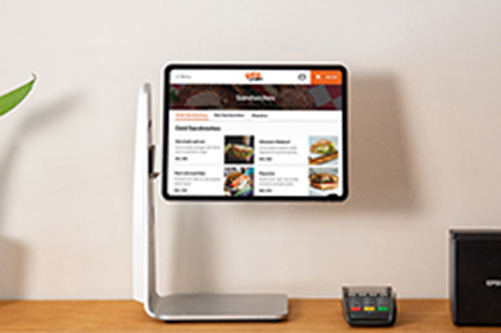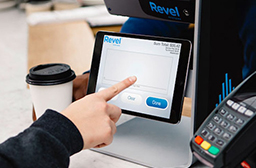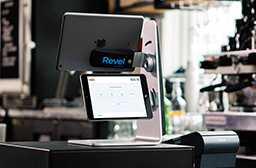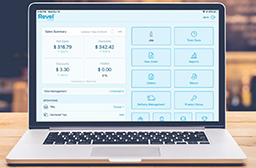Guide to Successful Discounts and Promotions
Whether you’re looking to clear slow-moving inventory, overcome a seasonal downturn, or have your biggest revenue day on record, discounts and promotions can drive your business metrics.

Discounts and Promotions, A Quick Guide
This quick guide explores four tips for creating, implementing, and measuring discounts and promotions to see what moves the needle for your business and what keeps your customers coming back for more.
1. Set Measures of Success

The first step of running an effective promotion is documenting what you want to accomplish. By having a clear objective, you’ll be better prepared to determine the type of promotion you want to run and how to promote it. Only you know what your business needs, but here are some common objectives to consider:
Customer-based objectives
Customer-based objectives will have a measure of success associated with customer acquisition, retention, or reactivation numbers. Maybe you want to bring in 20% more new customers in May than in April, or increase the average order frequency of your “VIP” customers from 2 to 4 times/month. These measures can generally be tracked for success with your customer relationship manager (CRM) and have the bonus effect of also bringing in additional revenue. Examples of customer-based objectives are:
- Promotions to acquire new customers
- Promotions to increase the purchasing frequency of a segment of customers
- Promotions to reactivate dormant customers
Product-based objectives
Product-based objectives will have a measure of success associated with total units sold of a particular item. Maybe you have an excess of a certain flavor of potato chip bags that need to go to make room for another flavor. Or, maybe you’ve recently added pasta to your normal pizza line-up and want your best pizza customers to give the new menu items a try. These measures can generally be tracked for success with Revel’s product mix report or other inventory sales reports. Examples of product-based objectives are:
- Promotions to clear out slow-moving or surplus inventory
- Promotions to boost average order size
- Promotions to introduce customers to new product categories
Time-based objectives
Time-based objectives will have a measure of success associated with total volume of revenue processed within a certain period of time. Perhaps you’re not on track to hit your sales goal for July, or you want to take advantage of the buzz of Small Business Saturday | Revel Systems. These measures can be tracked with a daily, weekly or monthly sales report. Examples of time-based objectives include:
- Promotions to overcome seasonal revenue declines
- Promotions to meet month or quarter ending revenue goals
Once you’ve determined what kind of business objective you want to achieve, remember to set your measurement of success as a SMART (specific, measurable, attainable, relevant, time-bound) goal. These parameters will help you set goals that are clear and measurable, so you can truly determine the success of your discount or promotion.
Examples of good goals:
- Increase net new customers 10% in the month of April
- Increase average ticket size by 6% on lunch orders (placed between 11 a.m. and 1 p.m. on weekdays) between August 15 and August 30
2. Select the Type of Promotion

There are almost infinite ways to offer and position price-based promotions. Here are some of the major ones to consider:
Volume-Based Discounts
Volume-based discounts work from the principle that “the more you buy, the more you save.” This encompasses BOGO (buy one, get one free) discounts, as well as “save 10% when you buy three,” which can help quickly clear older or excess inventory. Essentially, any time you’re offering an incentive for purchasing a larger quantity, that’s a volume-based discount. These types of discounts work well when you’re trying to drive up average order size or for move a specific inventory item.
Dollar or Percent Discounts
These are generally deployed as coupons. This approach offers a straight dollar or percentage amount off of an order. For example, “save 15% on your next order!” or “enjoy $20 off of any purchase greater than $50.” These can include conditions (certain dollar amounts or products purchased) but are generally presented as a way for customers to save on what they want to purchase. Coupons are generally good for customer acquisition and encouraging repeat visits.
Re-Price Discounts
A re-price discount replaces the price of a specific item for a specified period of time. An example would be, “all burgers are $6 on Tuesdays!” (if your burgers are normally $8). These work well to move specific inventory items and to acquire customers.
Positioning Your Promotion
Once you’ve selected your type of discount, you get to decide how to position your promotion! Again, there’s an almost limitless number of ways to position a promotion. Here are some to consider:
Flash Sale
Any of the above discount types can be promoted as a ‘Flash Sale,’ or one that is presented for a limited time only. Flash sales are a great way to drive revenue or sales of a particular item within a specific time frame. They also create a sense of scarcity and tap into ‘FOMO’ (fear of missing out) in potential consumers.
Happy Hour
Those in the nightlife industry know the Happy Hour concept well. Happy Hour is a reduction in price during a specific time to offset a natural downturn in traffic. But, this concept works outside of bars, too! For example, if you are a retailer whose sales are lowest on Tuesdays at 10 a.m., you can offer special pricing on Tuesdays from 10 to noon on a popular item or even your entire selection. This type of promotion encourages repeat visits because customers feel like they’re “in the know” or get a special deal.
Coupon with Purchase
Instead of providing a coupon for general use, you can provide a discount on a future purchase. This can be for purchases made within a specific time frame, for purchases exceeding a certain dollar amount, or for purchases over a certain dollar amount. You might offer something like this: “Spend $15 and receive $5 off your next purchase of $20 or more.” This model is popular with many large retail chains and is a great way to incentivize repeat business and reward your most loyal customers.
“Tripwire” or Loss Leader
Sometimes getting people in the door is the hardest part of making a sale. By introducing a “tripwire” or loss leader product — a product marked down so significantly that it attracts customers even if you sell it at break-even or below cost — you’re bringing new customers into your business. Most of the time, they’re going to purchase more than just your loss-leading product. This is, essentially, the Black Friday model. For example, maybe a certain can of beer is always $1, with the understanding that the beer will be offset by people buying pizza and wings.

VIP Sale
A “VIP Sale” is a way to reward a segment of customers with a special offer. This type of promotion involves messaging a specific segment of customers rather than your entire database or the general public. The offer can be time-bound or not, restricted in product or not. It’s essentially a way to drive repeat purchases and increase customer loyalty by rewarding those who have shopped with you in the past. Whereas the other types of promotions discussed should be promoted publicly, VIP promotions involve outreach to a limited group.
Holiday Sale
Take advantage of the excitement around shopping during the big “shopping” holidays of the year… Or, be the first to capitalize on a less popular holiday or occasion (who’s in on National Doughnut Day?). Participating in Black Friday is almost table stakes at this point but you can also get creative. For example, your ice cream shop could get a nice boost by running a “Last Day of School” promotion in conjunction with the end of the school year in your local district.
3.Promote Your Discount

Now you’ve got a killer discount in place and a great way to position it. What’s next? Now you need to get the word out! Depending on the type of promotion, there are a huge number of ways to make sure people know to take advantage of your offer. Here are a few to get you started:
In-Store & Window Signage, Bag Stuffers, Receipt Messaging
To promote an upcoming sale, use real estate that you already use to interact with customers to entice them to come back. Think of all the materials a customer takes with them when they leave and figure out a way to use it to promote your sale. Maybe it’s a flyer or coupon taped to the top of the pizza box, or a special message printed on the bottom of receipt. You can also place signs near the register and entrances.
Are you using a customer relationship manager (CRM)? If not, you should be! With a CRM, you’ve got a bank of email addresses at your disposal. By sending an email to customers who have visited before, you can encourage them to return.
Social Media
Is your business on Facebook, Twitter, Instagram, Pinterest, YouTube, SnapChat or another social channel? The list seems to grow constantly! If you are, use your page(s) to promote a sale to further engage customers and prospective customers who are already engaging with you online.
Local Advertising
Depending on your budget and geographical location, advertisements in the local newspaper or with the local radio station may prove fruitful in introducing your business to new customers. Alternatively, some local reporters and DJs may do a local business spotlight that would be free and could be considered part of your public relations outreach.
4. Measure Your Results

Now that you’ve effectively run your promotion, it’s time to dig in and see how successful you were. Remember the measures of success you set for yourself back in section one? It’s time to compare your actual results to the definition of success that you set out for yourself.
Use your reporting tools to run some reports and answer some questions. Were you able to sell more of that specific item? Were you able to bring in new customers? Did your overall revenue increase? If you’re using Revel’s cloud-based POS platform, the product mix report and daily sales report may be helpful.
If you hit all of your objectives, pat yourself on the back; your promotion was a success! Think about all the things you did — the type of promotion, how you promoted it — and consider replicating them in the future.
Did you fall short? That’s okay. Pat yourself on the back anyway, because now you have a chance to learn some things about your business! Think through all the things you did and note the following: What worked? What didn’t? What can you tweak in the future to ensure your promotions achieve their objectives next time?
Keep Learning
Ready to learn more? Check out our guide to developing profitable customer relationships for even more tactics on improving your customer relationships, and of course, your profits.



